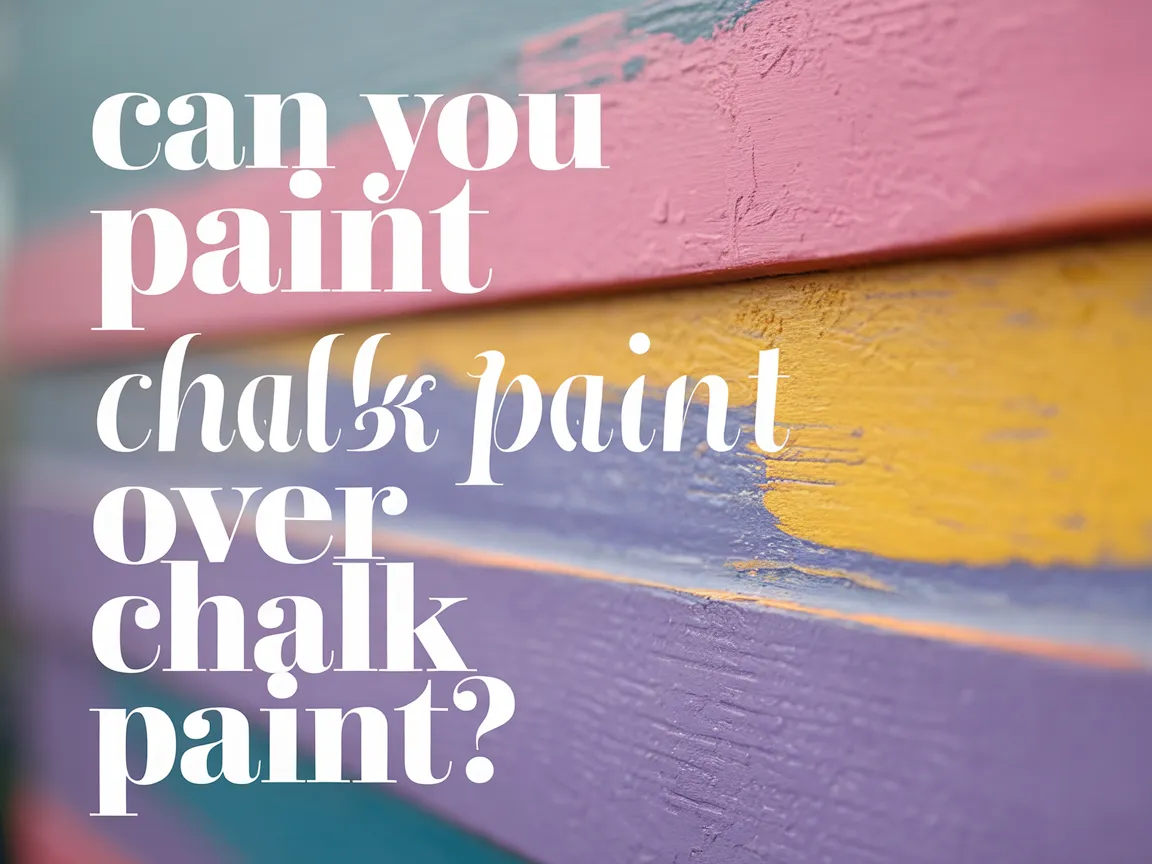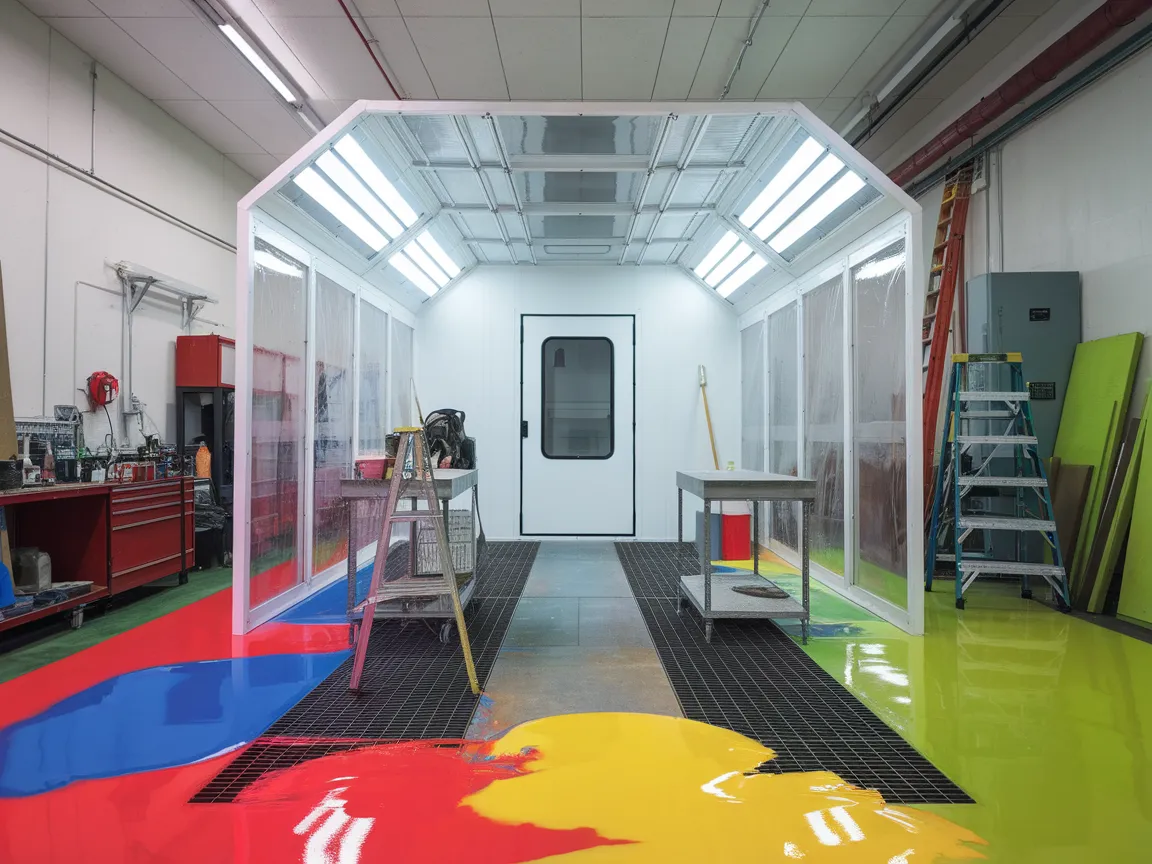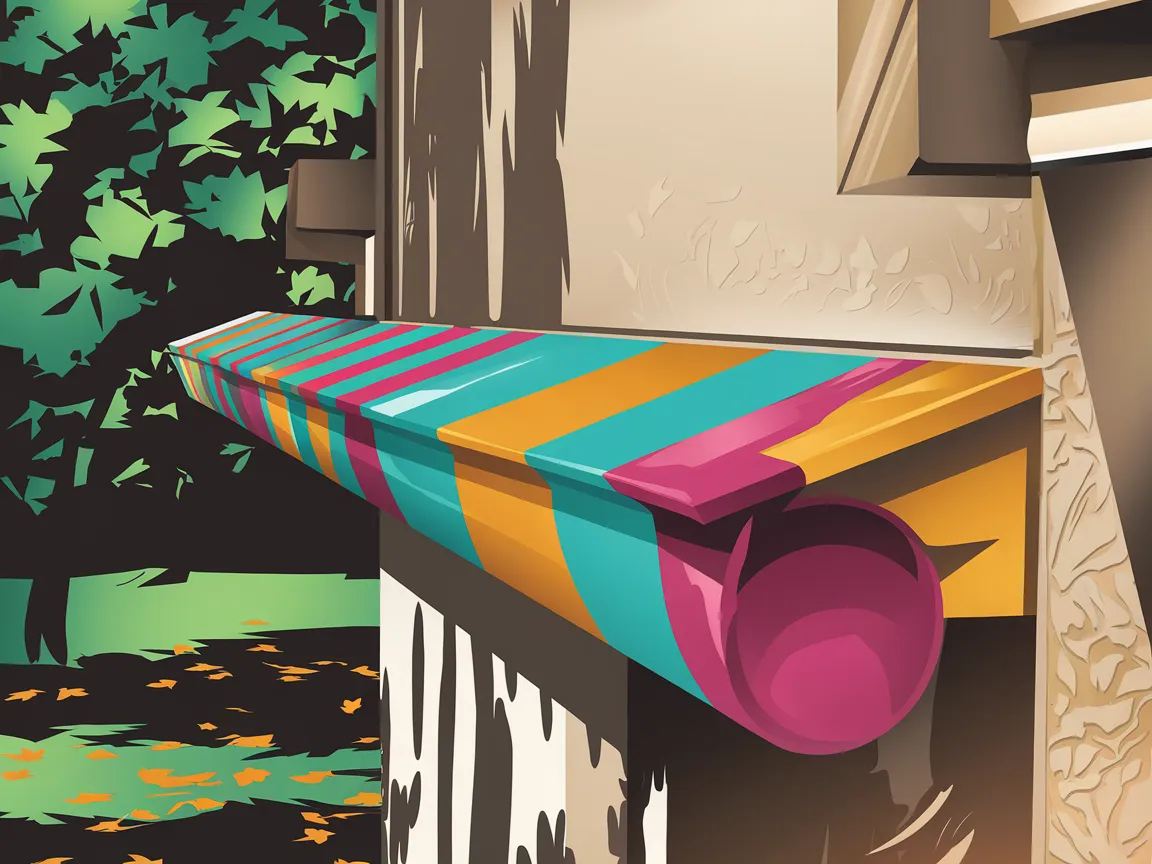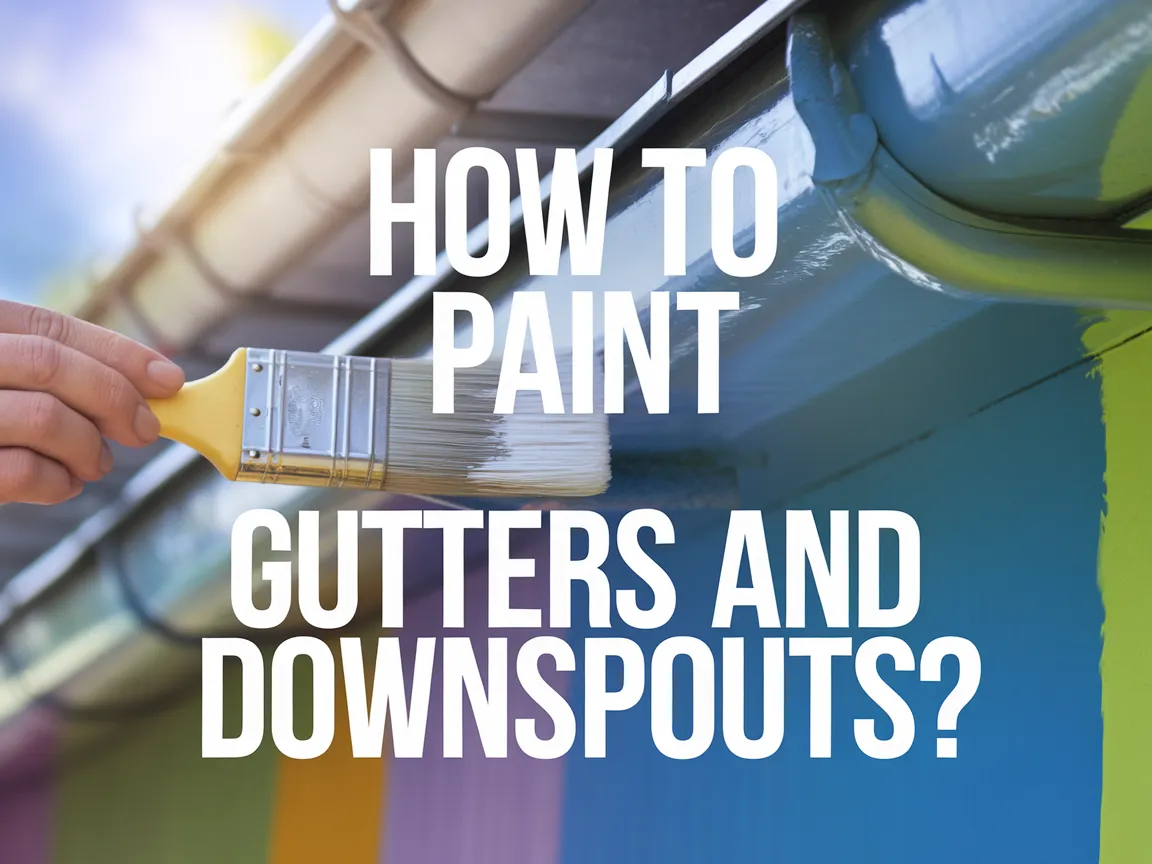How Much Can One Gallon Of Paint Cover?
Paint coverage is how much area a gallon of paint can cover. Think of it like a blanket, wrapping around everything in its path.
When you’re asking how much can one gallon of paint cover, it’s key to know for your painting project. I once painted my room, and I realized I needed more than I thought—saves time and stress!
In this guide, we’ll explore paint coverage, essential prep steps, types of paint, factors affecting coverage, and common issues. You’ll also get tips on creative DIY project ideas using one gallon of paint, and frequently asked questions about paint coverage.
Contents
- 1 How Much Can One Gallon Of Paint Cover?
- 2 What is Paint Coverage?
- 3 Essential Preparation Before You Start
- 4 Steps to Determine Paint Coverage
- 5 Types Of Paint and Their Coverage
- 6 Factors Affecting Paint Coverage
- 7 Common Issues When Estimating Paint Coverage
- 8 Optimal Drying Conditions to Maximize Paint Coverage
- 9 Understanding Paint Coverage: Importance of Primer
- 10 Estimating Paint Needs with Multi-Surface Applications
- 11 Calculating Paint Coverage with a Paint Calculator
- 12 Frequently Asked Questions About Paint Coverage
- 13 Conclusion
- 14 Additional Resources
How Much Can One Gallon Of Paint Cover?
One gallon of paint typically covers about 350 to 400 square feet (32 to 37 M²). That’s enough for a single coat on a medium-sized room. For best results, always check the paint label. Remember, two coats provide better coverage! If you’re dealing with surface imperfections, repairing paint surfaces effectively can help ensure a smooth finish.
The Finishing Touch
A freshly painted wall is a blank canvas. The best way to bring your room to life is with a single piece of statement art that ties everything together.
Browse Wall Art at Big Wall DecorWhat is Paint Coverage?
Paint coverage refers to the surface area a unit of paint can cover effectively. It’s usually measured in square feet (Ft²), with most paints covering about 32.5 to 37.2 m² (350 to 400 Ft²) per gallon (3.8 Liters). When painting surfaces, you might encounter challenges like addressing problematic mold growth that can impact your painting project.
You might wonder how much one gallon of paint covers. In my experience, that amount is helpful for personal projects or renovations.
When I worked on my living room, those figures helped me estimate how much paint I’d need. Calculating paint coverage became crucial for my project’s success. If you’re wondering about specific painting techniques like painting over dark existing colors, proper measurement ensures accurate material requirements.
Essential Preparation Before You Start
What do you need to prepare for?
- Quality Paint Sprayer: Consider the Wagner Control Pro 130. It’s great for even coverage and shows how much one gallon of paint covers.
- Measuring Tape: Get a Stanley PowerLock 25 ft (7.7 M) tape. You’ll need it to measure your walls and understand your coverage area.
- Surfactant Additive: Use Floetrol for latex paints. It enhances flow and leveling for consistent application when checking coverage.
- Drop Cloths: Use inexpensive plastic drop cloths like the Trimaco Easy Mask (12 Ft X 400 Ft (3.7 M X 122 M)). They protect your floors from spills while you paint.
We covered important preparations before starting your project. We will now cover how to determine paint coverage effectively.
Also See: How Many Cans Of Paint to Paint a Room? Find Out!
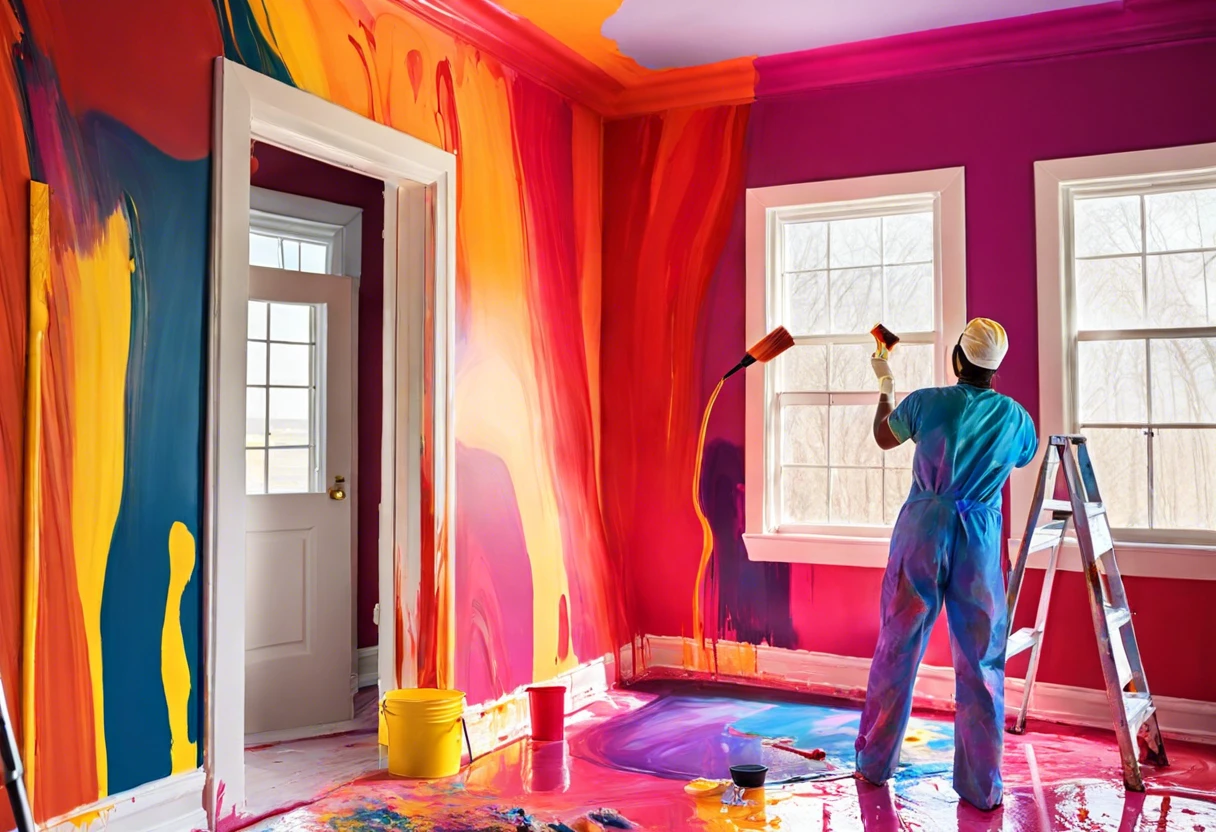
The Finishing Touch
A freshly painted wall is a blank canvas. The best way to bring your room to life is with a single piece of statement art that ties everything together.
Browse Wall Art at Big Wall DecorSteps to Determine Paint Coverage
We’ll cover steps to figure out how much area one gallon of paint can cover. Following these guidelines makes your painting job easier and saves you time.
-
Calculate Square Footage
Measure the length and height of the wall to get the total square footage. For example, a wall that’s 10 feet (3.05 M) by 12 feet (3.66 M) has an area of 120 square feet (11.15 M²).
This figure helps determine how much paint you’ll need. One gallon typically covers around 350 to 400 square feet (32.52 To 37.16 M²) for a single coat.
-
Check Paint Label Instructions
Always read the label on your paint can. It provides specifics about coverage for that paint type, as thickness can affect coverage.
Some paints cover approximately 300 square feet (27.87 M²), while others cover over 400 square feet (37.16 M²) per gallon—especially spray paints or semi-gloss finishes.
-
Account for Surface Texture
Determine if your surface is smooth or textured. Texture increases absorbency, reducing overall coverage; stucco, for example, can lower coverage to 250 square feet (23.23 M²) per gallon.
If your wall is previously painted, always apply primer before your main color. This helps the finish coat adhere better and often improves total coverage.
-
Factor in Multiple Coats
Decide how many coats you’ll need based on the initial color and type of paint. Covering a darker color with a lighter shade often requires at least two coats.
For best results, estimate an extra 15-20% more paint for multiple layers. This ensures you have enough for reapplication without extra trips to the store!
So far we covered how to calculate paint coverage. Let’s look at the different types of paint and their coverage next.
Types Of Paint and Their Coverage
Let’s discuss the types of paint: acrylic, latex, oil-based, and chalk paint.
-
Acrylic Paint
Acrylic paint dries quickly. One gallon typically covers about 400 square feet (37 M²).
-
Latex Paint
Latex paint is water-based and easy to clean. One gallon covers approximately 350 to 400 square feet (32 to 37 M²), depending on surface texture.
-
Oil-based Paint
This type offers a durable finish but takes longer to dry. One gallon covers about 250 to 300 square feet (23 to 28 M²), making it ideal for trim work.
-
Chalk Paint
Chalk paint has a matte finish and is popular for furniture. One gallon covers about 150 to 200 square feet (14 to 19 M²).
In my experience, latex paint is my go-to. It offers great coverage, easy cleanup, and fewer fumes, making it easier on the nose!
You should now have a good understanding of paint types and their coverage. In the next part, we’ll discuss coverage influencers.
Factors Affecting Paint Coverage
What factors influence how far a gallon of paint goes?
-
Surface Texture: Rough surfaces absorb more paint, reducing coverage.
-
Paint Type: Some paints, like primer or high-opacity (Coverage) paints, cover less area than others.
-
Application Method: Spray painting provides more even coverage than using a roller.
-
Color Change: Dark colors over light surfaces usually need more than one coat.
We covered elements influencing paint coverage here. We will now cover typical challenges encountered when estimating paint coverage.

Common Issues When Estimating Paint Coverage
Once, my friend thought one gallon of paint would cover his living room. Surprise! It barely coated half the wall. He didn’t consider the wall texture and the color change from light to dark.
To avoid this, always check the paint specifications (Specs). On average, one gallon covers about 32.5-37 m² (350-400 Sq. Ft.) on smooth surfaces. Adjust accordingly!
Optimal Drying Conditions to Maximize Paint Coverage
Ever thought about the weather when painting? Optimal drying conditions can truly make a difference in how well your paint covers.
-
Humidity Levels
Aim for humidity below 70%. High humidity can slow down the drying time, making the paint less effective. Your paint needs to dry properly to achieve its full coverage potential.
-
Temperature Guidelines
The ideal temperature range is between 50°F and 85°F (10°C to 29°C). Cooler temperatures can lead to a tacky finish, while hotter conditions can dry the paint too quickly, affecting the application and coverage. If you’re considering painting exterior surfaces like brick, proper temperature control becomes even more critical for achieving a professional painting brick house techniques.
-
Ventilation
Proper ventilation helps heave moisture and allows paint to dry evenly. Open windows or use fans during and after painting for the best results.
Understanding Paint Coverage: Importance of Primer
Did you know that primer plays a crucial role in paint coverage? It prepares the surface for the final coat, providing a smoother finish and enhancing color depth.
Why Use Primer?
Using primer can significantly improve how much paint one gallon covers. Here’s why:
- Seals Surfaces: Primer helps seal porous surfaces, preventing paint absorbency that can waste coverage.
- Improves Adhesion: It promotes better adhesion of the paint, enhancing durability.
- Even Color Base: Primer provides a uniform base, particularly essential when covering dark colors or altering shades.
Primer Coverage Rates
Just like paint, primers also have coverage rates. Here’s a quick guide to help you understand:
The Finishing Touch
A freshly painted wall is a blank canvas. The best way to bring your room to life is with a single piece of statement art that ties everything together.
Browse Wall Art at Big Wall Decor| Primer Type | Coverage (Ft² per Gallon) | Notes |
|---|---|---|
| Oil-based Primer | 200 to 300 Ft² (18.6 to 27.9 M²) | Good for blocking stains and improving adhesion. |
| Latex Primer | 300 to 400 Ft² (27.9 to 37.2 M²) | Flexible and easy to clean; best for drywall and plaster. |
| Shellac-based Primer | 200 to 250 Ft² (18.6 to 23.2 M²) | Ideal for tough stains but difficult to clean. |
By using primer, you boost your paint’s effectiveness and truly maximize how much area one gallon can cover—it’s a small step that reaps major benefits!
Estimating Paint Needs with Multi-Surface Applications
Planning to paint different surface types? Let’s dive into how to estimate paint needs accordingly.
Surface Types and Their Coverage Needs
Each surface type calls for different paint applications. Here’s a breakdown:
- Drywall: Expect around 350 to 400 Ft² (32.5 to 37.2 M²) per gallon.
- Wood: Coverage might drop to 250 to 300 Ft² (23 to 28 M²) due to absorbency.
- Metal: You might get 300 to 350 Ft² (27.9 to 32.5 M²) but always use a primer.
- Concrete: For an uncoated surface, coverage can be between 250 to 300 Ft² (23 to 28 M²).
When using one gallon of paint for various surfaces, always plan to test a small area first. This ensures good coverage and lets you adjust your estimates accordingly.
Calculating Paint Coverage with a Paint Calculator
A paint calculator simplifies the task of estimating coverage. It takes the guesswork out of your project.
| Dimension Type | Measurement | Calculated Area (Ft²) |
|---|---|---|
| Wall Height | 8 ft (2.44 m) | Calculated for a single wall 8 x 10 = 80 Ft² (7.43 m²) |
| Ceiling Width | 10 ft (3.05 m) | Calculated for a ceiling 10 x 10 = 100 Ft² (9.29 m²) |
| Doors/Windows Subtracted | 2 doors (15 Ft² & 17 Ft²) | 32 Ft² (2.97 m²) |
| Total Coverage Needed | 148 Ft² (13.75 m²) | |
Using the calculator above, you’ll see how easy it is to determine your paint requirements. For example, if you need to cover 148 square feet, and one gallon covers approximately 350 square feet (32.5 m²), you’re set! If you’re considering painting outdoor surfaces like blacktop, painting blacktop requires specific techniques.
Frequently Asked Questions About Paint Coverage
What is the Average Coverage Of a Gallon Of Paint?
The average coverage of a gallon of paint is about 350 to 400 square feet (32.5 To 37.2 M²). This range varies depending on paint type and surface texture, ensuring you plan for the project’s specifics.
How Many Coats Of Paint Should I Apply?
You should typically apply two coats of paint for the best coverage. One coat works for slight touch-ups, but two coats provide deeper color and even coverage. This is especially important for dramatic colors or significant surface differences.
Does Paint Texture Affect Coverage?
Yes, paint texture does affect coverage. Rough surfaces absorb more paint, reducing the coverage area. For example, textured walls may require 25% more paint than smooth ones, which can impact your budget if you’re not careful. If you’re struggling with exterior wall painting techniques, you might want to explore effective paint removal methods.
What Factors Can Cause Uneven Coverage?
Factors like paint quality, application technique, and surface condition can cause uneven coverage. Inadequate mixing or a dirty brush can lead to inconsistencies. Paying attention to these elements is essential for a professional-looking finish.
Can I Mix Paints for Better Coverage?
You can mix paints for better coverage, but it must be done carefully. Mixing different types (Like Latex and Oil-based) can lead to issues. Try mixing the same type and sheen to ensure exterior paint compatibility and maintain a consistent finish.
How Much Does a Gallon Of Paint Weigh?
A gallon of paint generally weighs about 6 to 12 pounds (2.7 To 5.4 Kg), depending on the base. Oil-based paints usually weigh more than water-based. Knowing the weight helps when transporting and storing your paint. If you’re curious about how professional painters like Bob Ross managed their paint supplies, check out his iconic painting techniques.
How Much is a Gallon Of White Paint?
The cost of a gallon of white paint typically ranges from $15 to $50 USD. High-quality brands may charge more, while budget options are often cheaper. Deciding on your budget upfront helps prevent sticker shock later. If you’re curious about professional painter preferences, I recommend checking out the paint brands used by experts.
How to Open a 5 Gallon Paint Bucket?
To open a 5-gallon paint bucket, use a flathead screwdriver to pry off the lid gently. Make sure to avoid damaging the rim. A clean opening ensures you can reseal and store the leftover paint correctly.
How Much is Five Gallons Of Sherwin Williams Paint?
Five gallons of Sherwin Williams paint can cost around $150 to $300 USD. Prices vary by color and finish type, so it’s smart to check the current rates at your local store before buying.
Conclusion
That brings us to the end of our journey through paint coverage.
We covered essential preparation, factors affecting paint coverage, steps to determine coverage, types of paint, creative DIY project ideas, and common issues to keep in mind. Remember, one gallon of paint usually covers about 350 to 400 square feet (32 to 37 square meters), depending on various factors like surface texture. Feel free to reach out if you have further questions about how much one gallon of paint can cover.
For more comprehensive resources and insights, visit our homepage: Paint Answers for all the information you need!
Additional Resources
- Gurney, J. (2009). Color and Light: A Guide for the Realist Painter. Kansas City, MO: Andrews McMeel Publishing.
- r/paint on Reddit: Rolling the dice on 1 gallon of paint per room?
- How much area will one gallon of paint cover? – Westlake Ace Hardware
Isabella is a Filipino-American art writer and critic specializing in contemporary painting, blending her Filipino heritage with global art trends. She holds a BFA from California State University, Long Beach, and a Minor in Art History from the University of the Philippines. Isa has experience as a Gallery Assistant, Art Appraisal Specialist, and Social Media Creative for Art & Design.
Exterior, Wall






